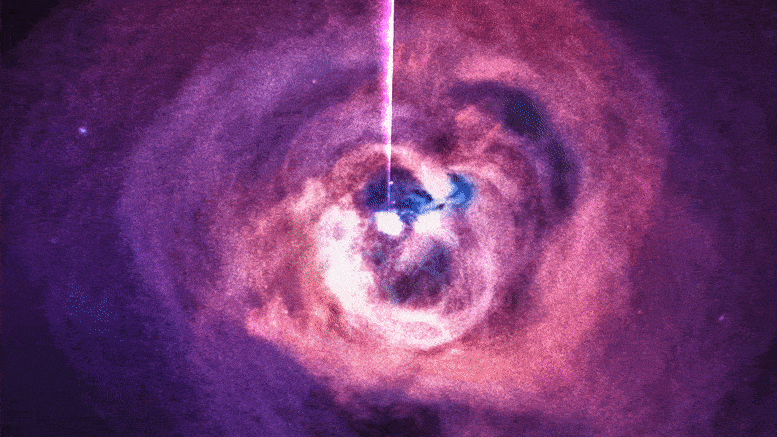It’s black hole week — sort of like shark week, but way cooler! To celebrate the occasion, NASA released the soundtracks of two supermassive black holes.

You may be aware that there is no sound in space since there is no air to propagate sound waves. However, that’s not technically correct. For one, there’s no such thing as a perfect vacuum. And, secondly, some regions of space can be filled to the brim with gas and dust — especially in the vicinity of black holes, which have a famous propensity for attracting things — which provide a medium allowing pressure waves to disperse. It is thus possible to record these frequencies and, with a bit of upscaling, hear the activity of a black hole.
Since 2003, NASA’s Chandra X-ray Observatory has been recording sound waves around the massive black hole in the heart of the Perseus galaxy cluster. This black hole emits pressure waves that send ripples through the cluster’s hot gas, radiating outwards from the center of the source, the black hole. However, these rumbles are so low they are way outside the audible range of the human ear, about 57 octaves below middle C.
Astronomers resynthesized the signal into the range of human hearing by upscaling the frequencies 57 to 58 octaves above the true pitch, meaning they can be heard about 150 billion million times higher than their original frequency.
Besides the black hole in the Perseus galaxy cluster, NASA researchers generated a sonification for the supermassive black hole at the center of Messier 87, or M87. This famous cosmic object became world-famous after scientists from the Event Horizon Telescope revealed the first image of a black hole (technically speaking the image showed the ‘shadow’ of the black hole since these objects do not allow light to escape).
To M87 sonification was performed differently from the Perseus one, employing data from three different types of signals: X-rays from Chandra, optical light from NASA’s Hubble Space Telescope, and radio waves from the Atacama Large Millimeter Array in Chile. This data was used to first generate a three-tier image, showing a jet produced by the black hole. Then, the researchers mapped each wavelength to a different range of audible tones: radio waves are mapped to the lowest tones, optical data to medium tones, and X-rays detected by Chandra to the highest tones. This explains why the M87 sonification sounds eery and atmospheric while the Perseus one sounds more like the growls of a hungry giant.






